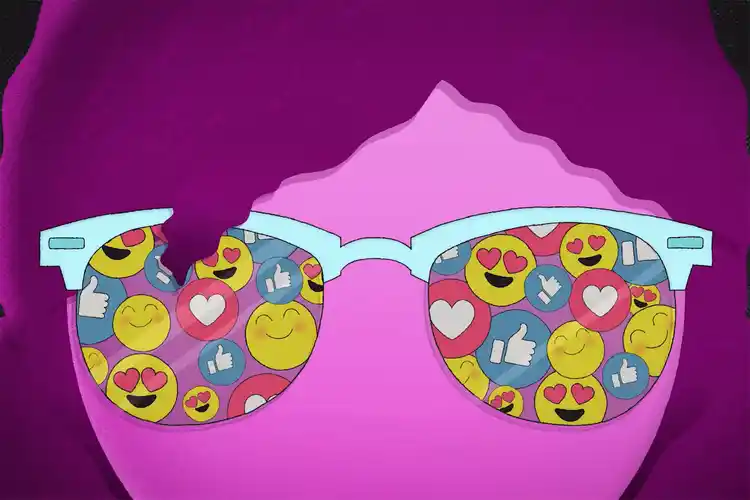Darker Skin Tones and Negative Messages

Hide Video Transcript
Video Transcript
KELLY WAIRIMU DAVIS
I wanted to learn more about the mental health implications of experiencing colorism. So I spoke to Dr. Josephine Almanzar, an Afro-Latina licensed psychologist. And owner of oasis psychological services. JOSEPHINE ALMANZAR
So colorism is expressed through innuendos, through microaggressions, and direct messaging about what is good and what is not good. And so those little messages build within us. And we begin to conceptualize our core belief or our understanding of ourselves in a certain way because of that. Our core belief is built during early childhood. And it's based on our interactions and the messages that we receive about our self-worth. And so you can almost think about it like sunglasses. And if we have a certain tint in our sunglasses, we view the world through that color. And for children of lighter skin color, they receive certain messages about who they are, what their skin color looks like. So if my skin color is praised, it's good. Maybe that means that I'm inherently good. I am worthy. I am lovable. I belong.
For children of darker skin color, the narrative looks different. Where they've been receiving a different type of message of negative information about their skin color and the way that they look. And so that informs their self-concept or their core belief in a different way. Where they might feel worthless, unlovable, that they don't belong. And that impacts their lens and how they view the world.
Through that core belief, symptoms might arise. Emotional distress might occur. And that's where we see depression. So we feel symptoms of sadness, hopelessness, feelings of worthlessness. We might feel a loss of interest in activities or a loss of motivation because what's the point. I'm not good enough. These people don't like me. What's the point of even trying.
KELLY WAIRIMU DAVIS
What would be a way to combat colorism within communities of color. Asian, Latinx, Black communities on a wide scale? Because I feel like there's still a barrier we need to break through. JOSEPHINE ALMANZAR: From mental health standpoint, we can help individuals build their coping strategies because it's inevitable that you will face some form of discrimination unfortunately. So what I can do is help you find safety within coping strategies, whether it be through social support, finding a community, being able to journal, being able to talk through your story openly. And being able to build up their sense of self. So what is your current core belief and who you are. And what do we want it to look like.
So that's on an individual level. How we can work on building people and facing these beauty standards.
KELLY WAIRIMU DAVIS: But colorism does not work alone. It's counterparts, featurism and texturism, also play a huge role in how people of color are treated within their own communities. And can have serious mental health implications.
NAYELI CHAVEZ
It's skin color, but it's also phenotype. So the person may have lighter skin, but if they have thick lips or they have a wide nose, then they will still be that stereotype about, oh, your skin color is beautiful. But look as your nose. RADHIKA PARMESWARAN: If your features depart from what this sort of very European ideal, then you're not seen as beautiful. Right? So hence, you have eye-altering surgeries in Japan. You may have nose surgeries in other parts of the world. You might have people filling out their lips to look more lush. And so you have all these-- a series of cosmetic surgeries that help you achieve features that are approximate more to the European ideal.
VANESSA GONLIN
So texturism is discrimination based on your hair texture. So if we're thinking of the four types of hair textures, the first one is straight. Type 2 is wavy. Type 3 is curly. And Type 4 is like coily to kinky. So are you able to go into work with your hair in its natural texture? I'm like type 3. I have curly hair. And for example, I've never been concerned that I would be turned down or have a difficult time at a job interview because of my natural hair. But I know there are people who have coily or kinky hair, who have type 4 hair, who do have that concern.
JOSEPHINE ALMANZAR
Children at a young age are told about their hair or taught either positive affirmations or negative affirmations about their hair. And feeling like, OK, the way in which I am naturally is not good. It's not OK. I need to change it. So it goes back to, what do these messages do to us internally? And so we find folks trying to navigate, and trying to survive, by straightening their hair. Relaxing their hair. Changing the way that they look. Plastic surgery. Using skin brightening products or bleaching products. All a way to cope with colorism and racism.
KELLY WAIRIMU DAVIS: In the next video, we'll dive a little bit deeper into texturism, which is a huge phenomenon within Black and Latinx communities.